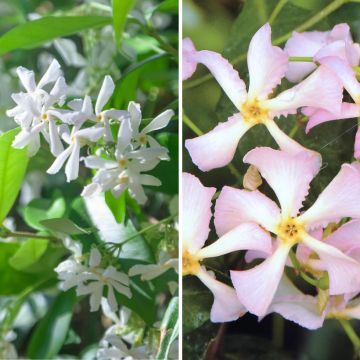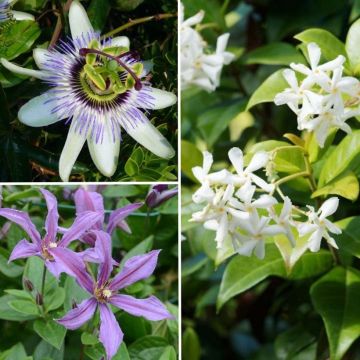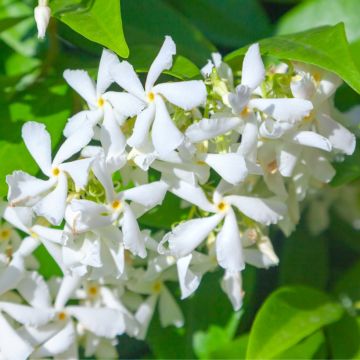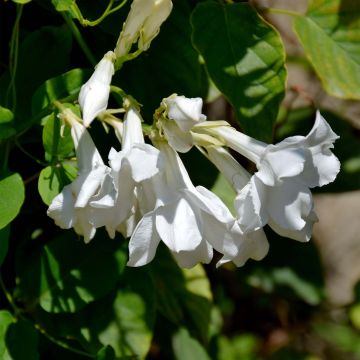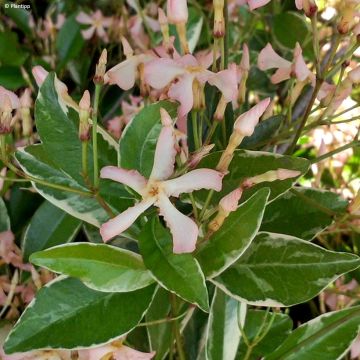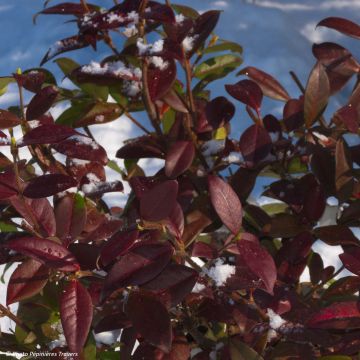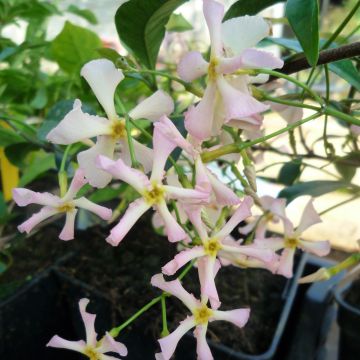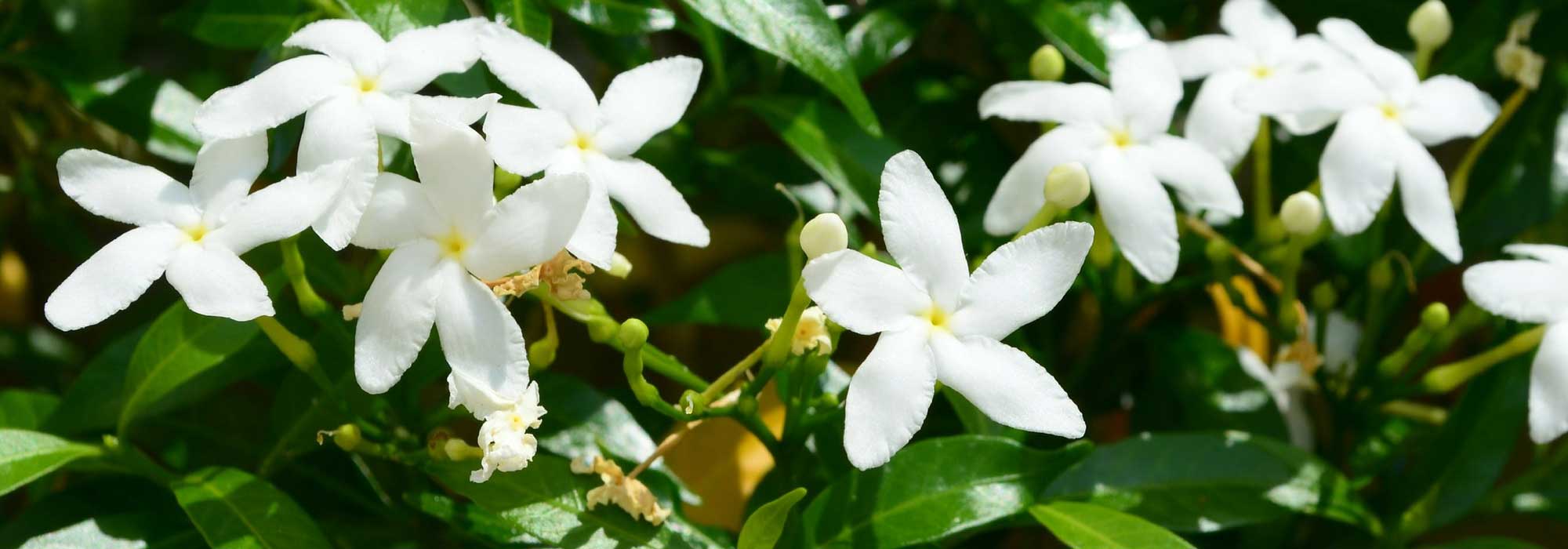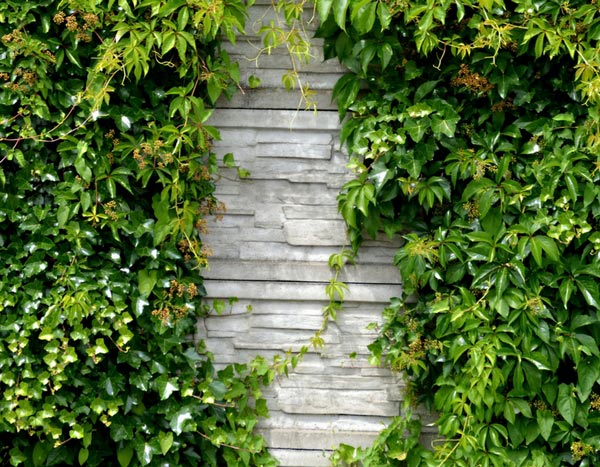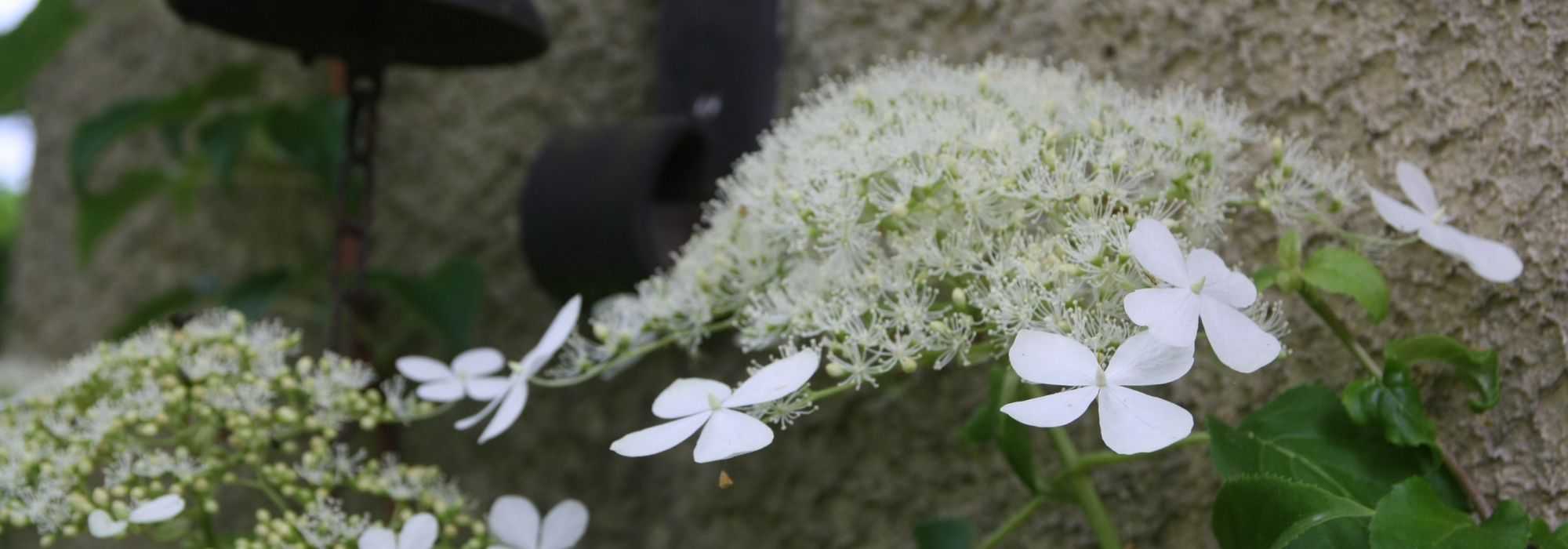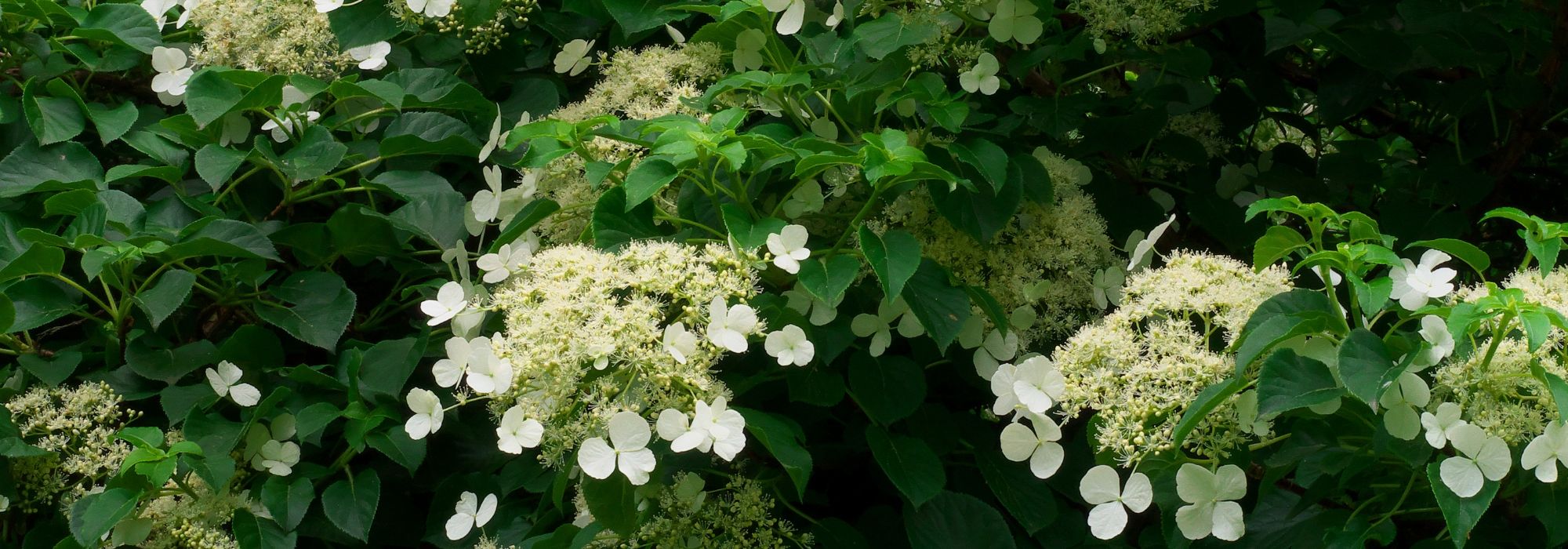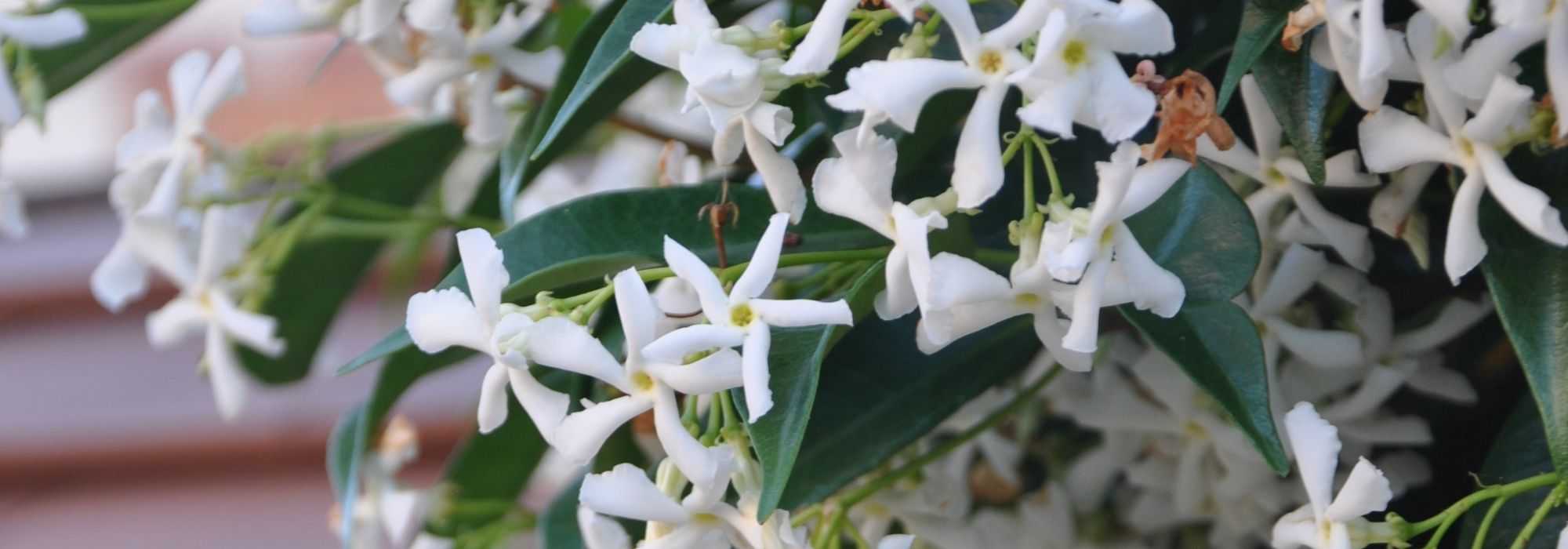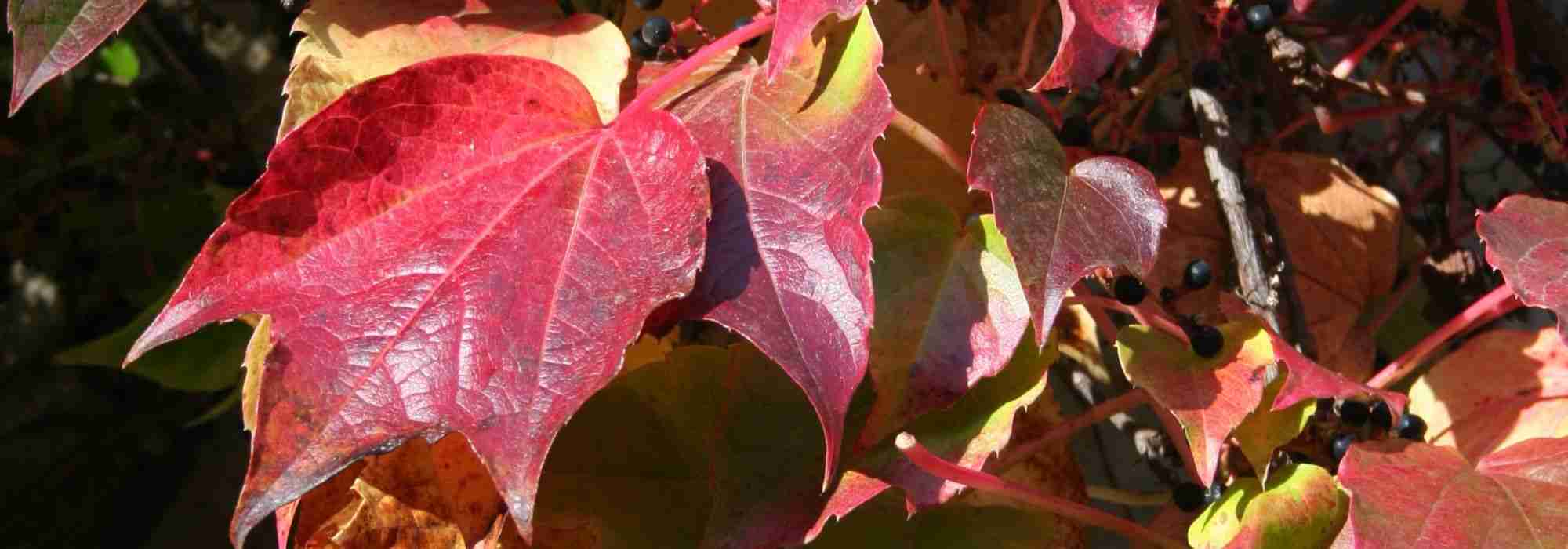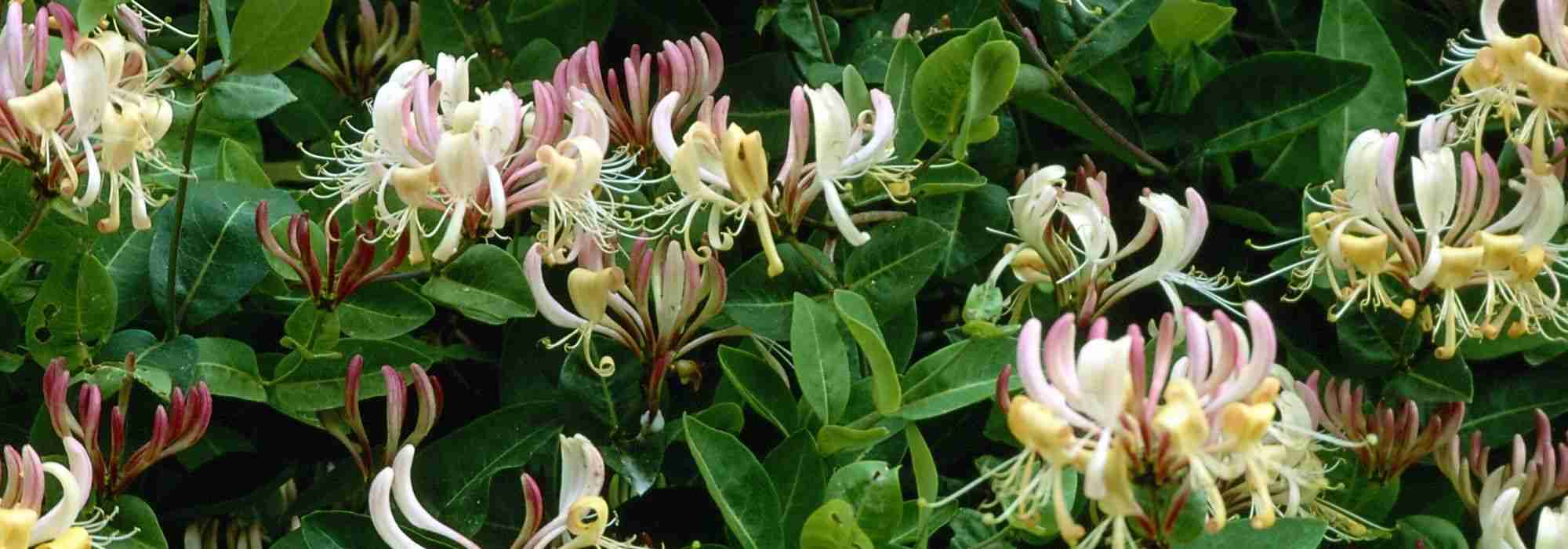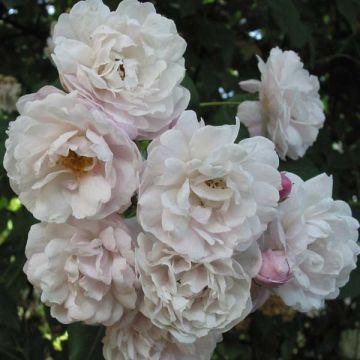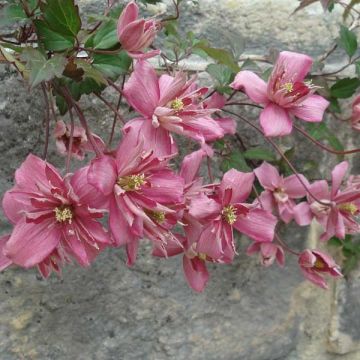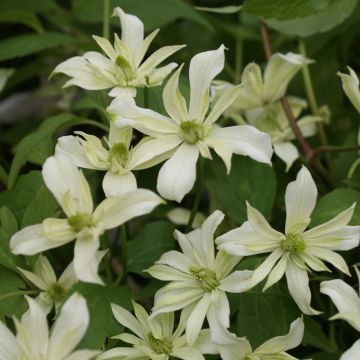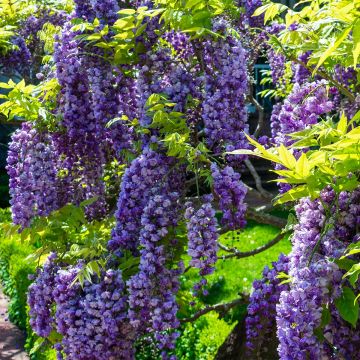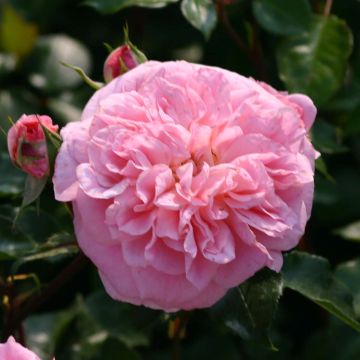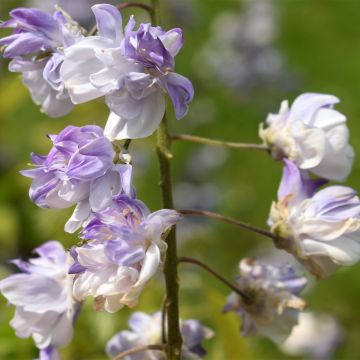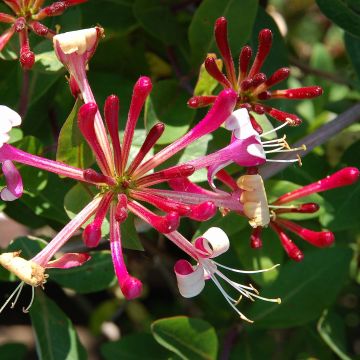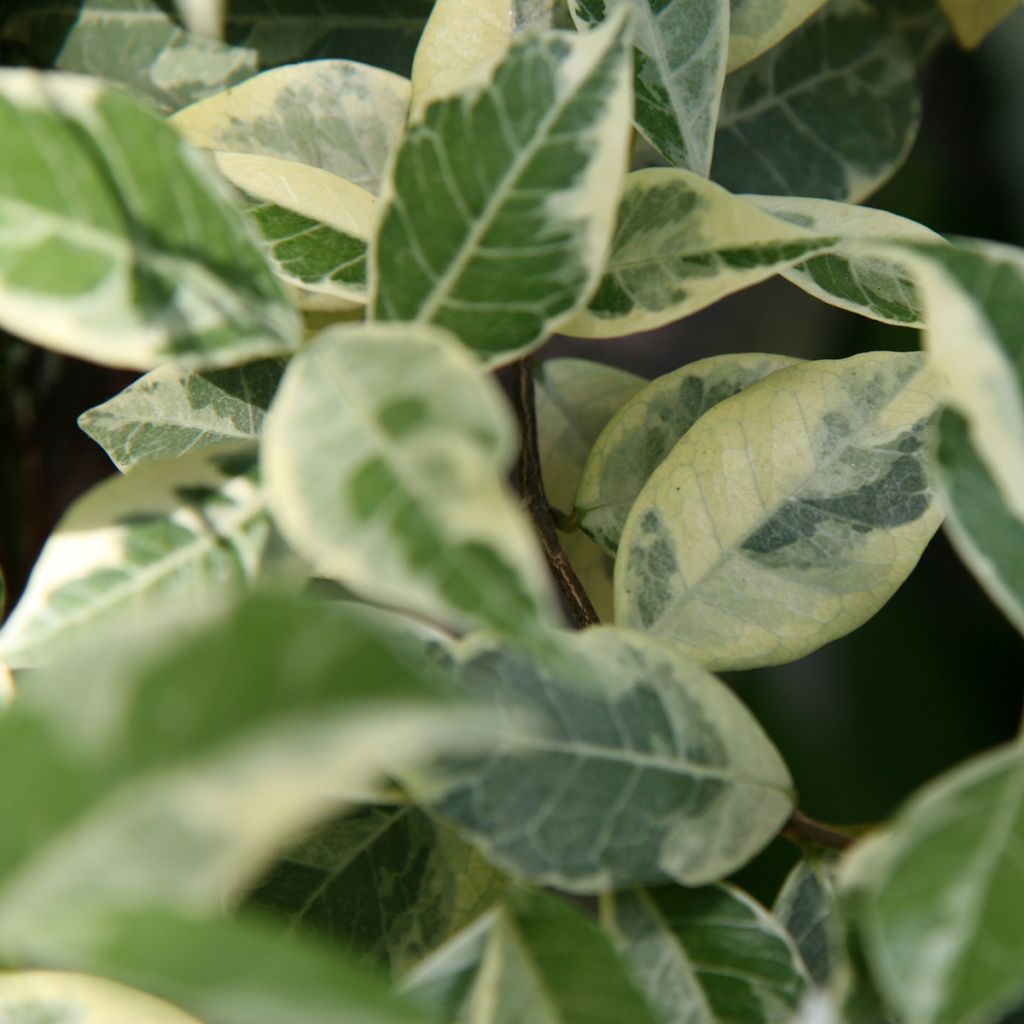

Trachelospermum jasminoides Sun Lover - Star Jasmine
Trachelospermum jasminoides Sun Lover - Star Jasmine
Trachelospermum jasminoides Sun Lover
Star Jasmine, Confederate Jasmine, Trader's Compass
Beautiful variegated foliage. The plant delivered was already very robust, in perfect health. Top!
Alain, 25/02/2023
Special offer!
Receive a €20 voucher for any order over €90 (excluding delivery costs, credit notes, and plastic-free options)!
1- Add your favorite plants to your cart.
2- Once you have reached €90, confirm your order (you can even choose the delivery date!).
3- As soon as your order is shipped, you will receive an email containing your voucher code, valid for 3 months (90 days).
Your voucher is unique and can only be used once, for any order with a minimum value of €20, excluding delivery costs.
Can be combined with other current offers, non-divisible and non-refundable.
Why not try an alternative variety in stock?
View all →This plant carries a 6 months recovery warranty
More information
We guarantee the quality of our plants for a full growing cycle, and will replace at our expense any plant that fails to recover under normal climatic and planting conditions.
Would this plant suit my garden?
Set up your Plantfit profile →
Description
The Trachelospermum jasminoides Sun Lover is a new variety of star jasmine with variegated yellow and cream foliage, particularly bright in the partially shaded areas of the garden. Like its Chinese ancestor, this climbing plant also captivates with its penetrating fragrance, both spicy and sweet, emanating from its countless small white flowers that can perfume a whole section of the garden in summer. The star jasmine Sun Lover is grown in the ground in our mild regions. Elsewhere, it will thrive in a large pot on the terrace or balcony during the warmer months and should be stored indoors during winter. While this voluble liana climbs with enthusiasm, it also forms a superb ground cover, replacing ivy.
Star jasmine is a climbing or creeping plant of the Apocynaceae family, related to periwinkles as well as to Alamanda, Mandevilla, and Dipladenia, the summer glory of our flowering pots. Its origins can be found in China, Japan, Korea, and Vietnam, where it grows on forest edges and among shrubs. It takes a little while to establish itself, developing long stems that quickly lignify, with its evergreen growth eventually covering an area of over 8m (26ft) in all directions in favorable climates.
The 'Sun Lover' cultivar distinguishes itself with its variegated foliage and slightly less vigorous growth, reaching an average of 3m (10ft) in all directions. Its hardiness is also somewhat variable, with a well-established plant surviving brief frosts around -7 to -10°C (19.4 to 14°F). The branches are adorned with opposite leaves, with entire oval-shaped laminae that taper to a point. They are thick and leathery, glossy, and variegated with yellow and cream, varying in darkness depending on the soil and light conditions. Their size ranges from 5 to 12cm (2 to 5in) in length and 2 to 4cm (1 to 2in) in width. When the plant suffers from cold or intense drought, the leaves take on a beautiful reddish hue, more intense in partial shade than in direct sunlight, before falling off. When conditions become more favorable, new leaves appear to replace them. The voluble branches, when in contact with a moist surface, produce aerial roots that allow the plant to cling to walls, the ground, or stones, similar to ivy.
Another asset of the Trachelospermum jasminoides Sun Lover is its abundant flowering from May to July, depending on the climate, and above all, its divinely fragrant flowers. The flowers are grouped in small clusters in the axils of the leaves and at the tips of the branches. The turbinate bud opens into a short-tubed corolla that widens and divides into 5 narrow, white petals arranged in a spiral. The diameter of the flowers reaches 2 to 3cm (1in). The fruit, rarely observed in our latitudes, matures into seeds with an egret. Like many plants of the Apocynaceae family, false jasmine contains alkaloids that are toxic to humans.
Moderately hardy, star jasmine Sun Lover is easy to grow, with the only real problem being severe frosts. While it is most commonly used to climb walls or fences, it can also make an excellent ground cover, even in the shade of deciduous trees, as an alternative to ivy. Perfect for filling out a hedge between evergreens or hiding an unpleasant view, Sun Lover false jasmine can also create a lovely permanent "tunnel" as a passage between two areas of the garden; it can be trained on a structure made of two arches joined by wires. It can also adorn the edge of a staircase, crown the slope of a hollow path... At its base, Mexican orange trees, shrubby mallows, and creeping ceanothuses will find their place. Its branches will intermingle with those of small clematis, modest honeysuckles, or climbing passionflowers and solanums in mild climates.
Plant habit
Flowering
Foliage
Botanical data
Trachelospermum
jasminoides
Sun Lover
Apocynaceae
Star Jasmine, Confederate Jasmine, Trader's Compass
Cultivar or hybrid
Planting and care
Plant the Sun Lover Trachelospermum jasminoides in spring north of the Loire, in September-October in the south. Choose a sunny or partially shaded exposure, even in shade in the south, where it will be slightly less floriferous. Install it in a deep, loose and healthy soil, well-drained, sheltered from cold winds. It can tolerate occasional temperatures as low as -10°C (14°F), but will better withstand severe frost if the foliage is protected with a winter cover and the soil is rather dry.
This plant tolerates limestone well, provided there is no excess moisture in winter; in heavy and suffocating soil, it may show symptoms of chlorosis (gradually yellowing leaves starting from the periphery, with the veins remaining green). Water during summer or in case of drought during the first two years, to help the plant establish. Once the roots have penetrated deeply enough into the soil, it will manage on its own, even in very dry summers. During growth, water once or twice a week and optionally apply liquid fertilizer twice a month. In autumn, a slow-release organic fertilizer can be applied and lightly incorporated by scratching at the base of the plant, starting from the second year.
You can prune it at the end of winter to control its development, or after each flowering.
Analysis: - "Trachelospermum jasminoides Sun Lover" has been translated as "Sun Lover Trachelospermum jasminoides" to respect the order of the plant's name in English. - "Loire" has been left untranslated as it refers to a specific geographical location. - "mi ombre" has been translated as "partially shaded". - "florifère" has been translated as "floriferous". - "vents froids" has been translated as "cold winds". - "ponctuellement" has been translated as "occasionally". - "-10°C" has been left untranslated as it refers to a specific temperature. - "feuillage" has been translated as "foliage". - "voile d'hivernage" has been translated as "winter cover". - "plutôt sec" has been translated as "rather dry". - "calcaire" has been translated as "limestone". - "excès d'humidité" has been translated as "excess moisture". - "chlorose" has been translated as "chlorosis". - "feuilles jaunissant graduellement à partir de la périphérie, les nervures restant vertes" has been translated as "gradually yellowing leaves starting from the periphery, with the veins remaining green". - "Arrosez l'été" has been translated as "Water during summer". - "sécheresse durant les deux premières années" has been translated as "in case of drought during the first two years". - "croissance" has been translated as "growth". - "engrais liquide" has been translated as "liquid fertilizer". - "automne" has been translated as "autumn". - "engrais organique à libération lente" has been translated as "slow-release organic fertilizer". - "griffage" has been translated as "scratching". - "deuxième année" has been translated as "second year". - "Vous pouvez le tailler" has been translated as "You can prune it".Planting period
Intended location
Care
Planting & care advice
-
, onOrder confirmed
Reply from on Promesse de fleurs
Similar products
Haven't found what you were looking for?
Hardiness is the lowest winter temperature a plant can endure without suffering serious damage or even dying. However, hardiness is affected by location (a sheltered area, such as a patio), protection (winter cover) and soil type (hardiness is improved by well-drained soil).

Photo Sharing Terms & Conditions
In order to encourage gardeners to interact and share their experiences, Promesse de fleurs offers various media enabling content to be uploaded onto its Site - in particular via the ‘Photo sharing’ module.
The User agrees to refrain from:
- Posting any content that is illegal, prejudicial, insulting, racist, inciteful to hatred, revisionist, contrary to public decency, that infringes on privacy or on the privacy rights of third parties, in particular the publicity rights of persons and goods, intellectual property rights, or the right to privacy.
- Submitting content on behalf of a third party;
- Impersonate the identity of a third party and/or publish any personal information about a third party;
In general, the User undertakes to refrain from any unethical behaviour.
All Content (in particular text, comments, files, images, photos, videos, creative works, etc.), which may be subject to property or intellectual property rights, image or other private rights, shall remain the property of the User, subject to the limited rights granted by the terms of the licence granted by Promesse de fleurs as stated below. Users are at liberty to publish or not to publish such Content on the Site, notably via the ‘Photo Sharing’ facility, and accept that this Content shall be made public and freely accessible, notably on the Internet.
Users further acknowledge, undertake to have ,and guarantee that they hold all necessary rights and permissions to publish such material on the Site, in particular with regard to the legislation in force pertaining to any privacy, property, intellectual property, image, or contractual rights, or rights of any other nature. By publishing such Content on the Site, Users acknowledge accepting full liability as publishers of the Content within the meaning of the law, and grant Promesse de fleurs, free of charge, an inclusive, worldwide licence for the said Content for the entire duration of its publication, including all reproduction, representation, up/downloading, displaying, performing, transmission, and storage rights.
Users also grant permission for their name to be linked to the Content and accept that this link may not always be made available.
By engaging in posting material, Users consent to their Content becoming automatically accessible on the Internet, in particular on other sites and/or blogs and/or web pages of the Promesse de fleurs site, including in particular social pages and the Promesse de fleurs catalogue.
Users may secure the removal of entrusted content free of charge by issuing a simple request via our contact form.
The flowering period indicated on our website applies to countries and regions located in USDA zone 8 (France, the United Kingdom, Ireland, the Netherlands, etc.)
It will vary according to where you live:
- In zones 9 to 10 (Italy, Spain, Greece, etc.), flowering will occur about 2 to 4 weeks earlier.
- In zones 6 to 7 (Germany, Poland, Slovenia, and lower mountainous regions), flowering will be delayed by 2 to 3 weeks.
- In zone 5 (Central Europe, Scandinavia), blooming will be delayed by 3 to 5 weeks.
In temperate climates, pruning of spring-flowering shrubs (forsythia, spireas, etc.) should be done just after flowering.
Pruning of summer-flowering shrubs (Indian Lilac, Perovskia, etc.) can be done in winter or spring.
In cold regions as well as with frost-sensitive plants, avoid pruning too early when severe frosts may still occur.
The planting period indicated on our website applies to countries and regions located in USDA zone 8 (France, United Kingdom, Ireland, Netherlands).
It will vary according to where you live:
- In Mediterranean zones (Marseille, Madrid, Milan, etc.), autumn and winter are the best planting periods.
- In continental zones (Strasbourg, Munich, Vienna, etc.), delay planting by 2 to 3 weeks in spring and bring it forward by 2 to 4 weeks in autumn.
- In mountainous regions (the Alps, Pyrenees, Carpathians, etc.), it is best to plant in late spring (May-June) or late summer (August-September).
The harvesting period indicated on our website applies to countries and regions in USDA zone 8 (France, England, Ireland, the Netherlands).
In colder areas (Scandinavia, Poland, Austria...) fruit and vegetable harvests are likely to be delayed by 3-4 weeks.
In warmer areas (Italy, Spain, Greece, etc.), harvesting will probably take place earlier, depending on weather conditions.
The sowing periods indicated on our website apply to countries and regions within USDA Zone 8 (France, UK, Ireland, Netherlands).
In colder areas (Scandinavia, Poland, Austria...), delay any outdoor sowing by 3-4 weeks, or sow under glass.
In warmer climes (Italy, Spain, Greece, etc.), bring outdoor sowing forward by a few weeks.






























